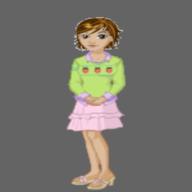1. Which one is the characteristic of a good reviewer?
A. Make changes to the draft only when necessary.
B. Make the draft conform to his/her own writing style.
C. Only focus on the areas that the drafter has not done so well.
D. Treat editing as a routine duty.
2. What should reviewers avoid doing when editing their subordinates’ drafts?
A. Explain what is wrong with the writing or why it is wrong.
B. Convey the writing standard expected of the writer.
C. Make reviews impulsively and intuitively.
D. Ask drafter to continuously practise the skills learnt.
3. Which of the following is NOT the reader-friendly approach to writing?
A. Information is relevant and organised.
B. Paragraph and sentence lengths are manageable.
C. Main message is put in the body of the writing.
D. Headings and subheadings are used when necessary.
4. Which area is NOT included in the editorial review?
A. Organisation of information
B. Accuracy and appropriateness of language
C. Tone and style of the writing
D. Completeness of information
5. How should a reviewer handle sub-standard writing?
A. Return the draft and ask the drafter to rewrite it.
B. Give feedback and show the drafter good writing samples.
C. Just tell the drafter that the writing is below the acceptable standard.
D. Challenge the drafter to solve the problem on his/her own.
Letter Writing
2013-03-03 5:29 pm
回答 (3)
2013-03-17 11:13 pm
✔ 最佳答案
Reviewer1. Which one is the characteristic of a good reviewer? (A and B are both correct*)
A. Make changes to the draft only when necessary.
B. Make the draft conform to his/her own writing style.
C. Only focus on the areas that the drafter has not done so well.
D. Treat editing as a routine duty.
2. What should reviewers avoid doing when editing their subordinates’ drafts?
A. Explain what is wrong with the writing or why it is wrong.
B. Convey the writing standard expected of the writer.
C. Make reviews impulsively and intuitively.
D. Ask drafter to continuously practise the skills learnt.
3. Which of the following is NOT the reader-friendly approach to writing?
A. Information is relevant and organised.
B. Paragraph and sentence lengths are manageable.
C. Main message is put in the body of the writing.
D. Headings and subheadings are used when necessary.
4. Which area is NOT included in the editorial review?
A. Organisation of information
B. Accuracy and appropriateness of language
C. Tone and style of the writing
D. Completeness of information
5. How should a reviewer handle sub-standard writing?
A. Return the draft and ask the drafter to rewrite it.
B. Give feedback and show the drafter good writing samples.
C. Just tell the drafter that the writing is below the acceptable standard.
D. Challenge the drafter to solve the problem on his/her own.
*Reference:(Editorial review - http://imgi.uibk.ac.at/mmetgroup/MMet_imgi/tools/mayfield/rev-ed.htm)
... the reviewer either makes the changes and returns the marked-up manuscript to the writer or makes marginal notes and a written report for the writer's use in revising.
2013-03-04 4:30 pm
How can 6 yrs letter-writing be so in-communicative?
圖片參考:http://imgcld.yimg.com/8/n/HA07102197/o/20130304082942.jpg
(1)C=area not done so well!
(2)C=make an impulsive action is wrong!!!!!
(3)B=To manage or control what you can on paragraphy!!
(4)C=Tone and Style not included.
(5)B=other good samples!!!
圖片參考:http://imgcld.yimg.com/8/n/HA07102197/o/20130304082942.jpg
(1)C=area not done so well!
(2)C=make an impulsive action is wrong!!!!!
(3)B=To manage or control what you can on paragraphy!!
(4)C=Tone and Style not included.
(5)B=other good samples!!!
2013-03-03 9:51 pm
1. C
2. A
3. B
4. C
5. B
2. A
3. B
4. C
5. B
收錄日期: 2021-04-29 22:17:19
原文連結 [永久失效]:
https://hk.answers.yahoo.com/question/index?qid=20130303000051KK00059


